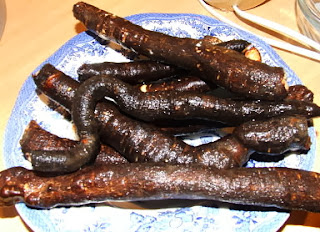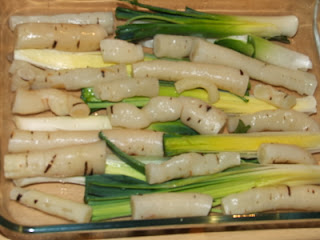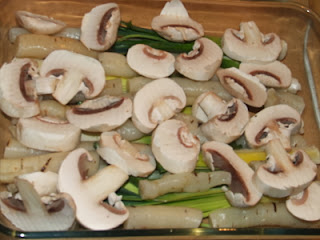.jpg)
.jpg) | |
| Scorzonera hispanica |
 |
| Scrubbed scorzonera roots |
.jpg) |
| Peeling boiled scorzonera roots |
 |
| Washed leeks - uncooked |
 |
| Leeks and scorzonera |
 |
| Leeks, scorzonera and mushrooms |
 |
| Covered in cheese sauce and topped with breadcrumbs and grated cheese. |
 |
| Baked for about 25 minutes in a medium oven |